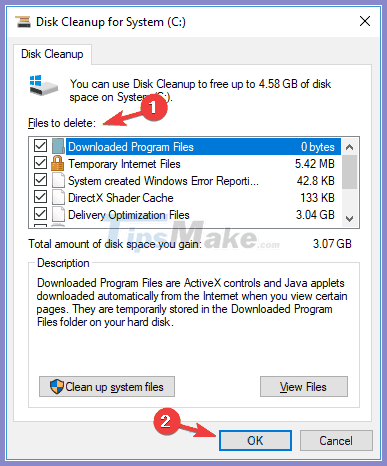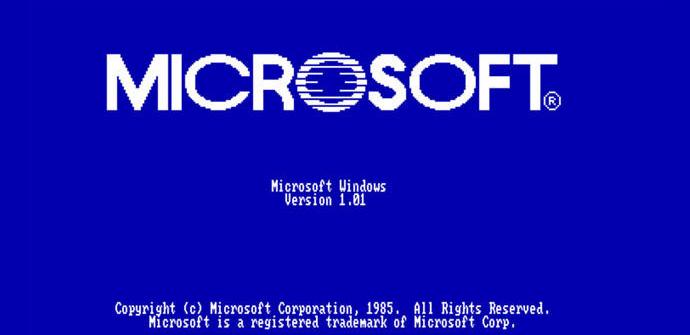To get started, open the Task Manager by searching for it in the Start menu, or use the Ctrl + Shift + Esc shortcut. Click More details to expand to the full utility if needed. Then on the Processes tab, click the Memory header to sort from most to least RAM usage. Keep the apps you see here in mind, as we'll discuss more on them later. After installing the free memory cleaner tool, open it on your Windows 10 PC. Go to System Monitor Process Monitor. Here you can find all the programs running on your PC, and check those which are using too much memory. Highlight the process and click End Process to stop it. Computer can run slowly due to insufficient RAM (Random Access Memory) and issues on hard disk. The above text has talked about some methods for hard disk. Hence, this method will focus on RAM. Upgrading RAM can help you fix virtual memory low issue. In other words, you can get more virtual memory by upgrading RAM.
Are you tired of your Windows 10 Computer working slow? Do you feel irritated when it acts like a tortoise when all you wanted was it to work like a rabbit? Do not worry. This article will help you tackle the biggest pain of all time: A Slow Computer. However, before we jump out to the tricks you can use to speed up and optimize your Slow Windows 10 Computer, you need to know what causes this problem. Users across the globe have cited many reasons behind the same. Some of them are:
How to Free up RAM on Windows 10 using Windows Task Manager. If you are not comfortable with using a third-party RAM cleaner, Windows has an inbuilt process, through which you can clean and free up your memory. The best way to free up RAM using the Windows Task Manager is by killing all background processes, or running Apps.
- Multiple applications running in the background.
- Too many Applications start running during startup of Computer.
- Temporary Files taking up too much space.
- Your computer has a Virus in it.
- You do not reboot your computer on a regular basis.
Here are some methods to Fix Slow Windows 10 PC:
Look out for bonus tips at the end of the article
#1 – Turn off Background apps
1. Click on start button and then click on gear shaped icon to open settings panel.
2. Click on Privacy
3. Now, go to background apps from the left menu.
4. Turn off , Let apps run in background.
Note that, if there are certain apps, which are necessary to run in background for you, just leave let apps run in background app on, and turn off each app below except important one.
#2 – Turn off Almost everything in Privacy
1. Click on start button and then click on gear shaped icon to open settings panel.
2. Click on Privacy
3. Now, keep clicking on menu items in the left and for each menu items , turn off everything on the right to disable items.
#3 – Disable Search indexing process running on your PC
This method will disable search indexing and when you will search something , windows 10 will not be able to find newly created or downloaded files, but if your PC is really slow, you can go ahead and do it. You can always turn it back on again.
Step 1 – Search services.msc in windows 10 taskbar search.
Step 2 – Click on services.
Step 3 – Now, find windows search entry from the list.
Step 4 – Double click on it. Choose startup type as disabled from the dropdown.
Step 5 – Click on stop. Finally press OK.
#4 – High performance power plan
1. Search powercfg.cpl in windows 10 search box.
2. Now, choose High performance power plan.
#5 – Delete Temporary and Unnecessary Files
Temporary files are those files that your PC stores over time. If they accumulate, they can slow down your PC and take up unnecessary space. It is recommended for you to keep cleaning the temp files from time to time.
1) Click on Start.
2) Search for Cleanmgr
3) Cleanmanager is used to clean unnecessary files in drive.
4) Manually Select the various hard drives you have installed eg: C:, D: etc. ONE by ONE and click Ok.
5) Select the various file types you want to clean up in the next window. Select all if you want to flush them all.
6) Now click on Clean Up System Files at the bottom of the window.
Get mac apps for free. 7) Click on Ok again.
8) Wait for few seconds .
Now, select all the cached items which you want to delete from your PC.
After cleaning the temp files, check if the slow computer problem persists. If it is still there, check the next method.
#6 – Unsync Onedrive
1. Right click on Onedrive icon located in taskbar.
2. Click on Pause syncing and pause for 24 hours.
3. If it speeds up your PC, its better to disable one drive and unlink your PC.
4. Right-click on the cloud icon in the bottom right corner of the taskbar
5. Choose Settings
Sometimes the One Drive icon is hidden so click on the Show hidden icons arrow as shown below and find the icon there.
6. In the Settings Window, Go to the Account tab and Choose Unlink this PC
#7 – Disable Startup items

1. Press CTRL + SHIFT + ESC together to open Task manager.
2. Go to startup tab.
3. Disable unnecessary items and programs by right clicking on it and clicking on disable.
#8 – Disable animations
1. Press Windows key + R to open run.
2. Write sysdm.cpl in it and click OK.
3. click on Advanced tab.
4. Click on settings under performance section.
5. This will now open up a box with the header “Performance Options.” From the different tabs that you can see, choose “Visual Effects” tab.
Then click on the third radio button which mentions “Adjust for best performance” and finally press the “Apply” button.
#9 – Increase Virtual Memory Size on PC
When your PC’s RAM cannot handle the tasks going on in the system, it can also cause your system to slow down. This can be fixed with the help of Virtual Memory.
There is a Virtual Memory, also known as Page File in Windows. It uses some of the memory space on your computer’s hard disk to process some of the data that RAM is supposed to process, but is unable to. Follow these steps to increase Windows Page File or Virtual Memory on your PC:
Step 1: Open the Run box on your PC by pressing Windows + R keys. Type sysdm.cpl in the Run box and press Enter. This will open the System Properties window.
Step 2: Open the Advanced tab in the System Properties window. There, go to the Performance section and click on the Settings button.
Step 3: A new Performance Options window will open. Here, navigate to the Advanced tab. In the Virtual Memory area, click on the Change button.
Step 4: Again, a new window will open up. Here, deselect the Automatically manage paging file size for all drivers option, then select the Custom size option. In the Initial size and the Maximum size fields, you will have to enter custom values to increase virtual RAM memory.
What are the values you should enter in Initial size and Maximum size fields? Notice a Currently Allocated value at the bottom of this window? In the Initial size field, put a value higher than the Currently allocated size. In the Maximum size, enter the value of your physical RAM multiplied by 3 (max).
Note: The values should be entered in MB (1 GB = 100 MB).
Finally: Once you set the values, press Ok. After closing all the open windows, reboot your computer.
See if increasing the Virtual RAM Memory fixed slow computer or not.
#10 – Troubleshooting with the help of System Maintenance
Troubleshooting is an inbuilt feature in Windows 10 that helps Windows 10 users tackle their PC related problems. If you are facing a Slow PC, you can use this feature to fix the problem. Please follow these steps thoroughly:
Step 1: Open Control Panel by going to Search and typing “Control Panel”.
Step 2: In the Control Panel, change View By to Large Icons.
Step 3: Click on Troubleshooting.
Step 4: Under the System and Security options, click on Run Maintenance Task.
Step 5: The System Maintenance box will open up. Click on Next and it will start detecting issues.
If it does not detect any issue, it will ask for your permission for Troubleshooting as an Administrator. Click on the option to grant it permission and continue.
Follow the instructions as they come up on the troubleshooter if any issue is there to fix.
After performing this solution, reboot the PC and see if your slow Windows 10 Computer was fixed. If not, try the next method.
#11 – Clean Boot PC to Fix Slow Computer (Windows 10)
A Clean Boot is just a way of starting up your computer with a minimum of programs. It lets you make sure if the program(s) and driver(s) starting up with your PC are causing it to startup slow. It does not delete your personal files such as documents and pictures. It just helps to identify if your computer is running slow due to the normal boot procedure.
Go here to see the steps to Clean Boot a PC. Check if the slow Windows Computer is working fine now. If not, go to the next method.
#12 – Scan and Fix Corrupted Files with System File Checker
Often system files get corrupted due to incompatibility, virus and malware attacks, wrong updates and downloads and cause a slow PC. You can perform these steps to run a System File Checker:
Step 1: Open the Run box by pressing Windows + R key together.
Step 2: Type cmd in the Run box and press Ok to open Command Prompt.
Step 3: After command prompt opens, type sfc/scannow and press Enter to execute the command.
Step 4: When the command prompt is done checking the files, restart the PC and check if the problem persists.
Note: The scan may take several minutes to complete, so wait until the scan is over and do not disturb it.
#13 – Reset PC to Fix Slow Computer (Windows 10)
Resetting your PC should be one of the things that you should consider if none of the above methods are working for you. Resetting a PC means reinstallation of Windows freshly on your PC, while keeping your personal files. While your personal files will be safe, such as videos, music, pictures, etc., the software installed on your PC and our personal settings would be deleted during this process.
Here is an extensive guide to Reset Windows 10 without losing Personal Files.
Some Extra Tips to fix a slow PC:
- Do not open too many (unnecessary) tabs in your web browser.
- Do not let unnecessary software run in the background when not needed.
- Keep deleting unwanted files on your system from time to time.
- Uninstall software that you needed in past but do not need now.
I hope one of the solutions work out for you to fix slow computer. If there is any other trick which has helped you to improve your PC’s speed, do share it with us in the comments section for our readers. Also, help us to identify the best solution among the above mentioned ones.
Related Posts:
Easily optimize your RAM for a real performance boost.
Device running slowly? It’s time to clear out old memory and boost available RAM—for free, with these optimization solutions from Avira.
Avira Free System Speedup
Understanding RAM and performance
Random Access Memory (RAM): Three little letters and a very large impact on system performance.
What is RAM anyway?
When you start a program, that file is retrieved from the hard drive. It’s then placed in RAM temporarily while you're working with that program. RAM is your digital “workspace.”
RAM and speed
The more RAM you have (and the faster that RAM!), the faster your programs will run. RAM is used up quickly if you’ve got lots of software installed—especially if many different apps fire up at once when you start up.
Don’t buy more RAM. Boost your available RAM:
Identify problem apps and uninstall them. Disable apps that start unnecessarily when you boot up. Get a trusted system optimizer/RAM cleaner (like the one below) to do it all for you
System Speedup for Windows
Discover an industry leader for more stable, turbo performance:
Helps you “lose weight”: Rids your system of all the clutter it no longer needs (system cache, temp files, internet junk, duplicates, etc.).
Tidies up your browser: Removes all online traces and temporary data from every browser to declutter your machine and shield your privacy.
Cleans your registry: Invalid registry entries? Remnants of uninstalled software? System Speedup analyzes the problems and clears them out.
Optimizer for Mac
Fire up the app, do a scan, and see it remove the clutter that’s slowing you down.
Does a spring clean: Download microsoft office 2016 free for mac. The Junk File Cleaner deletes unnecessary files and browser junk. The Duplicate Finder clears copies of photos and other files.
Gets rid of monsters and dinosaurs: It spots XL and old files that are hogging your resources.
Speeds up start times. Helps you speed up by around 25%, as it limits the number of tasks performed while Windows loads.
Optimizer for Android
Turn even an older Android into a lean, mean mobile machine.
Boosts speed: Optimizes processes for faster start-ups and greater performance.
Cleans up fast: Clears your cache junk and duplicate files on your phone and SD card for a feather-light, speedier experience.
Manages apps: Gives you instant insight into how much space each app uses so you can uninstall the worst offenders with a tap.
Worried about maintaining your device? Relax.
We hope you have more on your mind than device optimization—that’s why we created OnWatch for PCs and Macs. Use it to schedule automatic alerts to clean your device.
Discover the Avira advantage
We’re proudly Made in Germany. Our multi award-winning software portfolio is the result of 30 years of experience in developing security and performance solutions. In fact, our applications already protect over 500 million devices, so you’re in good company!
Mr Henry Hardwick
Sean Kelly
Paul Roberts
Heinz Hammer
Jan van Jaarsveld
Vi
Mohamad Ali Golkar
Ram Optimizer Windows 10
Mary
Get more speed for free—download now

Enhance the performance of all your devices.
Looking for premium optimization tools?
Discover System Speedup ProFor WindowsNeed to drive performance with our Speed Booster?
PC crawling like a snail? Devices are like car engines. Give them the cleanup and tune-up they need…
How To Clean Up Ram In Windows 10
Find out how your PC can run like new with our Speed BoosterWant to last longer with our Battery Saver?
Battery icon flashing again? Find out what’s draining it and extend the performance of your mobile devices…
See how to optimize battery life with our Battery SaverIs it time to clear out the clutter with our Junk Cleaner?
Screen frozen? For more speed, disk space, and performance, take out the trash (like junk files, temp files…)
How To Clean Ram Memory
Free up space and speed up your device now with our Junk Cleaner